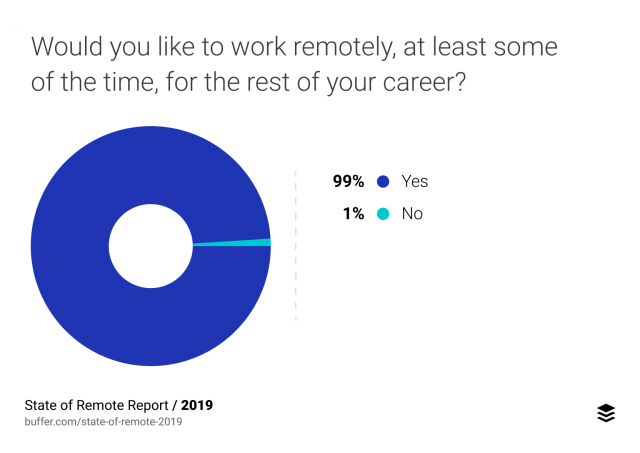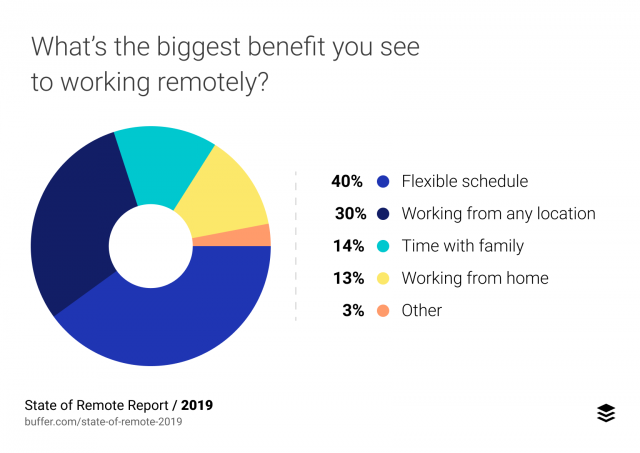Many professionals, for instance, writers, artists, and designers have been working remotely – alone at home or in a study near home – for ages. It has been considered something that came with the profession. Recently knowledge workers who commuted daily to an office have realized that they could do the same as long as they had a decent internet connection. The trend and desire for remote work is strong. But how to manage working alone when there are no scheduled breaks or office hours?

Buffer, an enterprise that provides tools for social media, has published a survey State of Remote Work 2019 that highlights the pros and cons of working out of office. The key finding is that those professionals who have taken the step, and are working remotely, wholeheartedly agree that it is something they want to do now and in the future. 99% of remote workers want to work remotely.

The Buffer survey was based on 2471 answers submitted by remote workers primarily in North America and in Europe. The majority of respondents work in IT, services and marketing industries.
The benefits of working remotely

Remote workers consider the biggest benefits for staying away from the office are flexible schedule and the possibility to work anywhere they want. This also explains the rise of the trend of digital nomads – professionals who travel the world while working remotely.
A word of warning from our own experience is the third most popular reason for remote work in Buffer survey: time with family. It should never be the reason to work at home. If you want to spend time with your family you can’t work. It is that simple.
The major concern is working too much
Distractions that slow down productive work, lack of face-to-face social contacts during a work day, and poor support of colleagues are challenges for some remote workers, whereas others are not bothered at all with these issues. The Buffer survey discovered that unplugging after work really is the biggest concern for remote workers.

It is easy to agree with this. Knowing when to stop working, staying away from work, and actually doing completely something else that refreshes the mind and body require discipline.
How to structure a productive day of remote work?
Every remote worker I know is constantly thinking of ways to improve their productivity. For entrepreneurs it may mean outsourcing tasks to subcontractors, for freelancers it may mean getting better tools, for writers and photographers it may mean going out to the street to find new ideas and perspectives to their stories.
Above all, making remote work productive requires that the lone professional takes regular breaks. Quartz reports about a study by Draugiem Group that tracked employees’ work patterns with an application. It measured the time employees used on various tasks and compared this to their actual productivity.
The ideal schedule for productivity in knowledge work is 52 minutes of work, and a break of 17 minutes. It was discovered as the optimal timing for a maximum level of focus in work.
Employees who followed the schedule of an hour of work, a quarter of break didn’t check Facebook and weren’t distracted by social media.
During short breaks, they completely separated themselves from work. This helped the employees to conduct another productive hour of work.
The study discovered another fascinating thing: the hours worked during a day didn’t matter much. The most important thing was how they structured their day. People who were consistent about taking short breaks were far more productive than others who worked longer hours.

